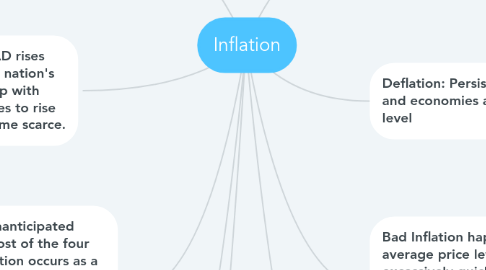Inflation
by Amin Agdi

1. Good inflation occurs when the rate of inflation is at a steady and slow rate of 5%
2. Demand Pull: When AD rises without AS rising, the nation's output cannot keep up with demand, causing prices to rise and products to become scarce.
3. Cost Push: An unanticipated increase in the cost of the four labors of production occurs as a consequence of a negative supply shock. This might result in increased demand for natural resources, increased wage demands, and increased government control.
4. Stakeholders:The primary stakeholders which are affects by inflation would be producers consumers and the government. The producers and consumers are affected in a different way as price levels rise and currency gets devalued meaning that spending goes up as consumers stop caring. Governments are affected as well as they are responsible for smoothing the transition on the business cycle.
5. A real life example of inflation would be in Germany after World War 1 when it has suffered many economic and political shocks due to the treaty of Versailles and other factors. Germany had to pay reparations for the damages they had caused. The inflation got so bad that the rates had gone up to 30000% per month. At one point people used cash as a fuel to heat themselves.
6. The persistent rise in the economy's average price level, as monitored and estimated by the Consumer Price Index (CPI).
7. Deflation: Persistent decrease in and economies average price level
8. Bad Inflation happens when the average price level rises at an excessively quick rate, causing goods and services to become prohibitively costly and the currency in circulation to lose value.
9. The Long Term effects of inflation are that consumers are encouraged to spend and stock up on goods as currency starts to lose it's value. Unemployment goes down as well as prices of loans get low as well. In the long run this over works the economy meaning that the economy can't keep up.


